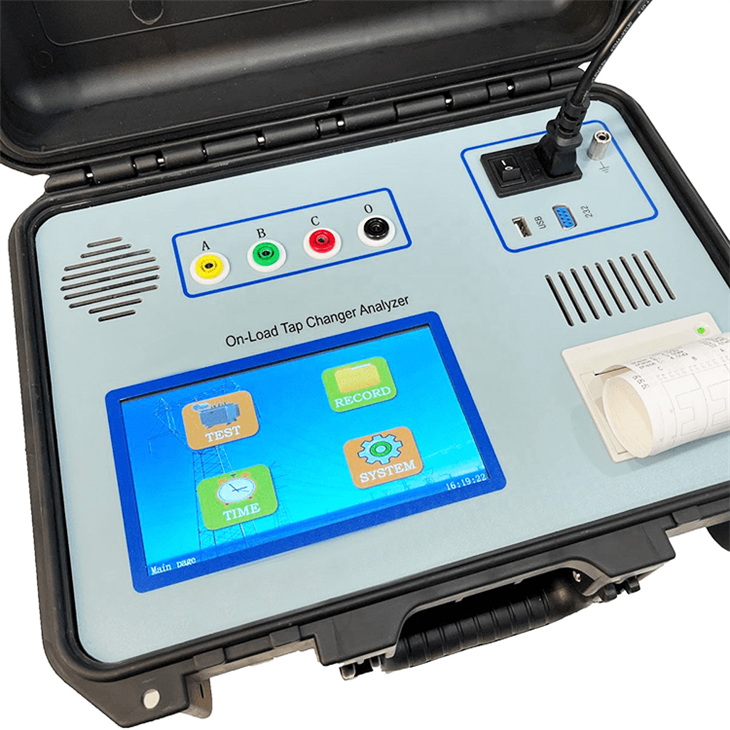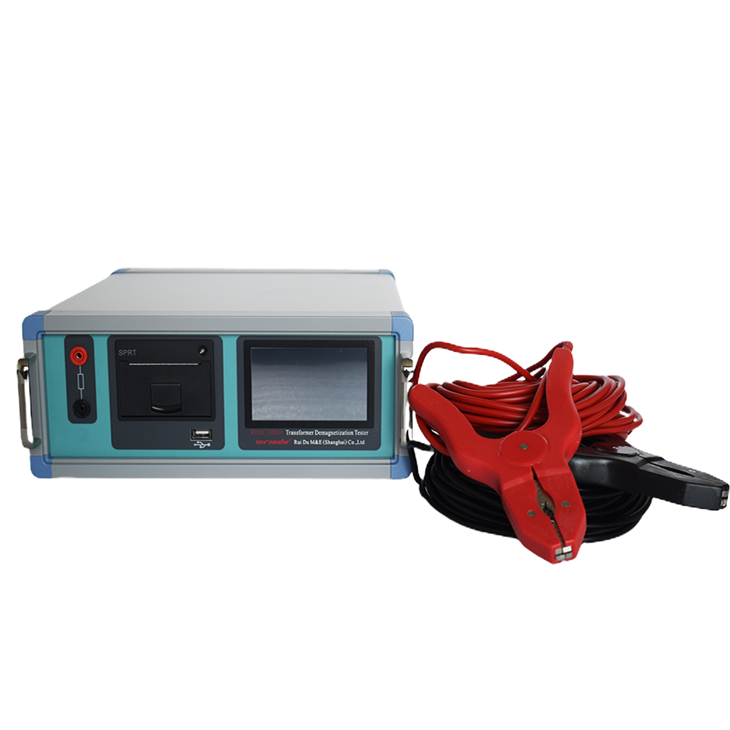
An On-Load Tap Changer (OLTC) Analyzer identifies mechanical wear by monitoring electrical and mechanical signals during tap transitions. It measures dynamic resistance, motor current, and vibration patterns to detect contact degradation, worn resistors, and mechanical faults, enabling preventive maintenance. Wrindu’s analyzers provide accurate, real-time diagnostics that improve transformer reliability and reduce operational downtime.
What Is an On-Load Tap Changer Analyzer?
An On-Load Tap Changer Analyzer is a diagnostic instrument used to evaluate the condition of tap changers in power transformers. It records electrical parameters like dynamic and static resistance alongside mechanical data such as motor current and vibro-acoustic signals during switching. Wrindu’s analyzers ensure precise detection of wear, faults, or abnormal operations for maintenance planning.
How Does Dynamic Resistance Measurement Help Detect Mechanical Wear?
Dynamic resistance measurement (DRM) tracks resistance changes as the tap changer moves through positions. Irregular resistance patterns, prolonged transitions, or unexpected current fluctuations indicate deteriorated contacts or worn mechanical parts. Wrindu integrates high-resolution DRM in its analyzers, offering early detection and precise monitoring of tap changer health.
Which Mechanical Signals Are Analyzed to Identify Wear?
Mechanical wear is assessed through motor current signatures and vibro-acoustic signals. Deviations in motor current or abnormal vibration patterns highlight friction, misalignment, or component degradation. This allows engineers to determine which parts require maintenance or replacement without disassembling the transformer.
Why Is Vibro-Acoustic Analysis Important for Tap Changer Condition?
Vibro-acoustic analysis measures vibrations transmitted through the tap changer structure. Variations in frequency or amplitude reveal defects such as loose components, worn cams, or compromised springs. This non-invasive method provides real-time insights into mechanical integrity, supporting Wrindu’s holistic diagnostic approach.
When Should Mechanical Wear Be Diagnosed Using an OLTC Analyzer?
Mechanical wear should be diagnosed during scheduled maintenance or if operational anomalies—like poor voltage regulation or prolonged tap transition times—occur. Regular inspections prevent unplanned outages, extend transformer life, and optimize system performance.
How Does a Tap Changer Analyzer Integrate Electrical and Mechanical Tests?
Advanced analyzers synchronize electrical measurements like dynamic resistance and motor current with vibration data. This integrated approach correlates electrical and mechanical faults, providing comprehensive diagnostics. Wrindu’s solutions excel in merging these measurements for actionable maintenance decisions.

What Role Does Particle Profiling Play in Detecting Mechanical Wear?
Particle profiling evaluates transformer oil for debris generated by mechanical wear, such as metal shavings or carbon from contact arcing. Shifts in particle type or concentration indicate ongoing deterioration, offering predictive maintenance insights. Wrindu analyzers can complement oil analysis to forecast tap changer faults effectively.
Which Features Should Manufacturers in China Focus on for OLTC Analyzers?
Chinese manufacturers should prioritize high sampling rates, multi-sensor vibro-acoustic capabilities, and intuitive diagnostic software. Customization for various tap changer types and adherence to IEC and CE standards improve competitiveness. Wrindu emphasizes precision engineering and user-friendly interfaces to meet global market demands.
What Are the Advantages of Using Wrindu’s OLTC Analyzers?
Wrindu OLTC analyzers integrate dynamic resistance, motor current, and vibro-acoustic analysis into a single platform. Manufactured in China, these instruments provide reliable diagnostics, OEM customization, and cost-effective solutions. Wrindu’s devices support on-site and laboratory testing, enhancing transformer safety and operational efficiency.
How Can B2B Suppliers Benefit from Implementing OLTC Analyzers?
B2B suppliers, transformer manufacturers, and service providers can use OLTC analyzers to improve quality control, reduce downtime, and offer advanced diagnostic services. Wrindu’s analyzers enable suppliers to provide value-added solutions for clients worldwide, combining precision technology with scalable OEM support.
Wrindu Expert Views
“Mechanical wear in On-Load Tap Changers is a major factor affecting transformer reliability. By combining dynamic resistance measurement, motor current analysis, and vibro-acoustic monitoring, OLTC analyzers deliver a complete diagnostic perspective. At Wrindu, we focus on advanced technology aligned with international standards to detect early-stage wear, enabling preventive maintenance and ensuring safer, more efficient power networks.” — Wrindu Engineering Team
OLTC Analyzer Diagnostic Techniques Comparison
| Technique | Detection Focus | Key Benefit | Application Scope |
|---|---|---|---|
| Dynamic Resistance Measurement | Contact resistance & transition timing | Early detection of contact degradation | All OLTC types |
| Motor Current Analysis | Mechanical drive issues | Identifies friction and faults | Works with dynamic resistance |
| Vibro-Acoustic Analysis | Mechanical integrity | Non-invasive fault detection | On-line and off-line testing |
| Particle Profiling | Oil contamination by wear | Predictive maintenance tool | Oil quality and mechanical wear assessment |
Key Takeaways for B2B Buyers and Suppliers in China
-
OLTC analyzers detect mechanical wear through dynamic resistance patterns, motor current, and vibration monitoring.
-
Wrindu provides comprehensive, customizable OLTC diagnostic tools for wholesale, OEM, and factory-direct supply.
-
Regular testing enhances transformer reliability and reduces unexpected outages.
-
Vibro-acoustic sensors enable mechanical fault detection without disassembly.
-
Particle profiling complements mechanical diagnostics by revealing wear debris in transformer oil.
FAQs
How often should OLTC analyzers be used for diagnosis?
During scheduled maintenance to detect early mechanical wear and prevent failures.
Can mechanical wear be detected without shutting down the transformer?
Yes, dynamic resistance and vibro-acoustic testing can be performed online.
What makes Wrindu OLTC analyzers unique?
Wrindu combines high precision, advanced sensor technology, and OEM customization from a certified Chinese factory.
Is particle profiling essential for every test?
Not mandatory, but it provides predictive insights into wear progression.
Can OLTC analyzers assess all tap changer types?
Yes, advanced Wrindu analyzers support resistance, reactance, and series transformer OLTC designs.



